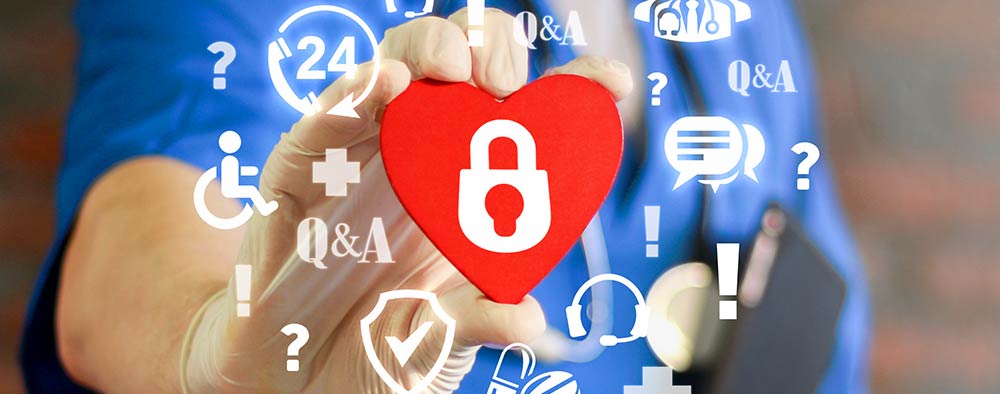by Ray Foxworth, D.C., FICC •
President & Founder, ChiroHealthUSA •
Healthcare organizations, small and large, have become prime targets for cyberattacks due to the valuable patient data they store, including medical records, personal information, and financial data. The consequences of a successful breach can be catastrophic, ranging from financial losses and reputational damage to compromised patient safety. The Office for Civil Rights (OCR) has successfully enforced the HIPAA Rules by applying corrective measures in all cases where an investigation indicates noncompliance by the covered entity or their business associate. To date, OCR settled or imposed a civil money penalty in 141 cases resulting in a total dollar amount of $137,738,772.00. OCR has investigated complaints against many different types of entities including national pharmacy chains, major medical centers, group health plans, hospital chains, and small provider offices. (US Department of Health and Human Services, 2023) Critical cybersecurity threats in healthcare include: (Kost, 2023)
Ransomware Attacks: Cybercriminals encrypt sensitive data and demand a ransom for its release, disrupting operations until payment is made.
Phishing Attacks: Malicious emails or websites trick employees into revealing sensitive information or installing malware.
Insider Threats: Employees with access to patient data may unintentionally or maliciously compromise security.
IoT (Internet of Things) Vulnerabilities: IoT, refers to the collective network of connected devices and the technology that facilitates communication between devices and the cloud. Connected medical devices may be targeted to gain access to a healthcare network.
Third-Party Risks: Data breaches may occur through vulnerabilities in third-party vendors, such as EHR providers or billing services.
Data breaches are costly in terms of fines, legal fees, and loss of revenue. Four HIPAA violation penalty tiers exist, with penalties in each tier increasing based on the entity’s knowledge of the violation. (The HIPAA Journal, 2023)
In Tier 1, for example, the covered entity is unaware of the HIPAA violation. It may receive a fine of $100 to $50,000 per violation. In Tier 2, the fine increases from $1,000 to $50,000 per violation, considering the entity should have known about the violation by exercising due diligence.
Tier 3 affects entities who willfully neglect HIPAA rules but correct the violation within 30 days of discovery; this tier comes with a penalty of $10,000 to $50,000 per violation. Tier 4 includes willful neglect of HIPAA rules without any effort to correct them; the fine is $50,000 per violation.
Over the past few decades, HIPAA settlements and civil monetary penalties have fluctuated dramatically. In 2010, for example, total fines reached $1,035,000. However, in 2018, the HIPAA settlements and fines skyrocketed to $28,683,400. In 2022, fines reached slightly less than $2 million. (Wanca, 2022)
Best Practices for Cybersecurity and Data Privacy
Employee Training: Conduct regular cybersecurity training to educate staff about phishing, social engineering, and the importance of strong passwords.
Access Control: Implement strict access controls to limit who can access patient data, ensuring that employees only have access to what is necessary for their roles.
Encryption: Encrypt patient data both in transit and at rest to protect it from unauthorized access.
Regular Updates and Patching: Keep all software and systems updated with security patches to address vulnerabilities.
Firewalls and Intrusion Detection Systems (IDS): Employ firewalls to monitor and control network traffic and IDS to detect and respond to suspicious activity.
Data Backup and Recovery: Regularly back up patient data and establish robust recovery procedures in case of a ransomware attack.
Vendor Assessment: Evaluate the security practices of third-party vendors with patient data access.
Incident Response Plan: Develop a comprehensive incident response plan that outlines steps to take in the event of a security breach.
Cybersecurity and data privacy are not optional in healthcare; they are non-negotiable components of providing quality patient care. As the threat landscape continues to evolve, healthcare organizations must be proactive in safeguarding patient data. (Glib, 2023)
By implementing robust cybersecurity measures, continuously educating staff, and staying informed about emerging threats, healthcare businesses can protect themselves from devastating breaches, uphold their patients’ trust, and ensure the highest standards of care in an increasingly digital world. Not sure if you are as compliant as you need to be, request your free Compliance Gap Analysis from ChiroArmor.










 ▶︎
▶︎  Why is the Discount Challenge prize amount $15,024? Because that is the average “per-occurrence” fine for Medicare inducements. That’s not $15,024 per patient, that’s not per provider, that’s PER VISIT. Stinks, doesn’t it? To us, the prize amount is worth the investment if we can help our profession better understand proper discounting.
Why is the Discount Challenge prize amount $15,024? Because that is the average “per-occurrence” fine for Medicare inducements. That’s not $15,024 per patient, that’s not per provider, that’s PER VISIT. Stinks, doesn’t it? To us, the prize amount is worth the investment if we can help our profession better understand proper discounting.